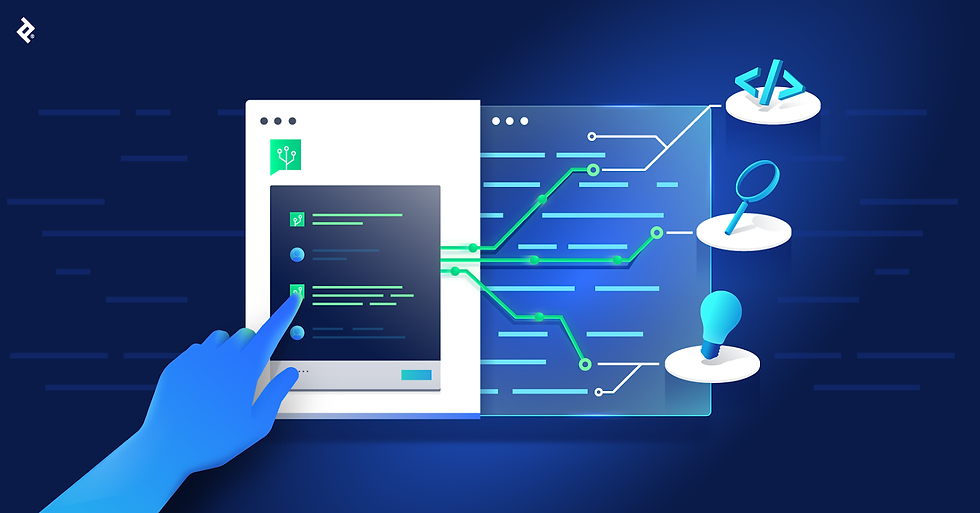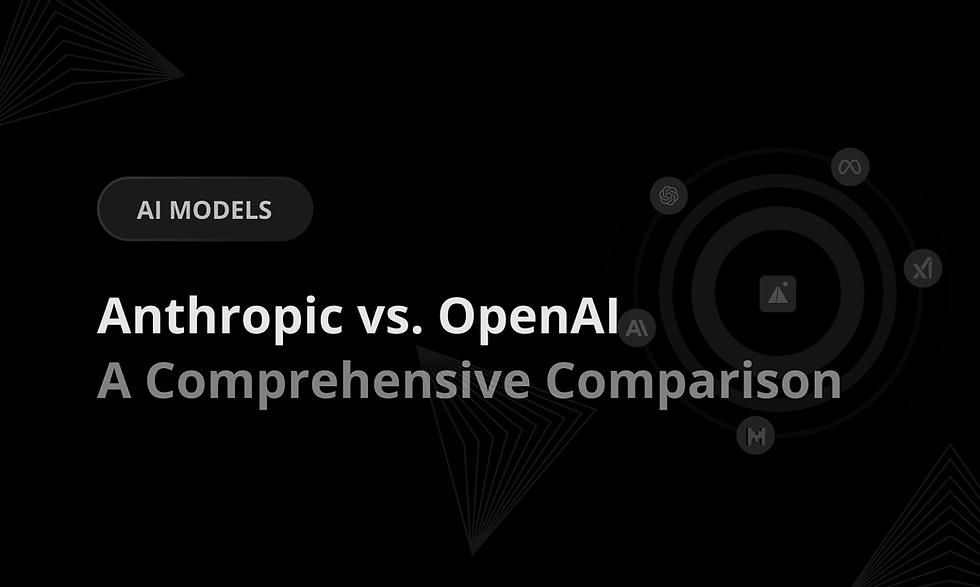US Software Company igniteTech Cuts 80% of Employees for Low AI Engagement
- Aisha Washington

- Aug 25
- 18 min read

Overview of IgniteTech cuts 80% of employees for low AI engagement
IgniteTech's recent personnel shakeup has become a flashpoint in the debate over workplace automation and digital transformation. Reports say CEO Eric Vaughan announced a dramatic downsizing—what headlines framed as IgniteTech cuts 80% of employees—aimed at removing staff who, in the company's telling, resisted company-wide AI adoption. The move was defended publicly by the CEO as part of a broader effort to transform product development and realize AI-driven efficiencies, while critics called the action reckless and punitive.
This episode crystallizes a difficult trade-off: accelerate AI adoption to chase productivity and competitive parity, or prioritize cautious, people-centered change management to preserve knowledge, morale, and reputation.
The story matters well beyond IgniteTech because it signals how fast some leaders are willing to restructure engineering teams in pursuit of automation. For the software industry, the episode reads as an early test case of AI driven workforce restructuring—how companies match incentives, retraining, and governance to rapid tool rollouts. The company’s own commentary about remote work and engagement has been cited alongside press reporting to explain the rationale and the internal framing that preceded the personnel actions.
Key takeaway: IgniteTech cuts 80% of employees is a headline-making claim tied to a specific leadership choice about AI adoption; its downstream lessons depend on what’s verified, what’s internal framing, and how the market responds.
Case summary and timeline
CEO Eric Vaughan’s comments and company context: According to press profiles, CEO Eric Vaughan described letting go of a very large portion of staff over reluctance to adopt AI workflows, a move framed as necessary for organizational transformation and better productivity under modern tooling. This account is captured in coverage that profiles his rationale and the public reaction, making Eric Vaughan IgniteTech layoffs a central reference point.
Percentage and scope: Multiple outlets report the claim as roughly 80 percent of employees being removed; reporting varies on geography and which roles were affected, and some coverage emphasizes that the CEO’s account is the primary source for the figure.
Timeline summarized from press reports: The remarks and retrospective interviews were published after the workforce changes, with the CEO later reiterating the decision in public interviews and company blog context about remote worker engagement.
Company messaging versus external coverage: IgniteTech’s own blog posts on remote work and engagement were published before and after the personnel actions and have been used to justify changes in culture and expectations; these company statements are part of the public record and sit alongside independent reporting.
The central factual claims rest primarily on the CEO’s public statements and IgniteTech’s blog posts, while independent verification of the precise headcount and internal decision memos is limited.
For readers wanting the CEO-level account, see the profile that summarizes Eric Vaughan’s rationale and remarks about staff departures and AI adoption in greater detail, as reported by an Indian business daily. A profile in The Economic Times that quotes Eric Vaughan on firing staff for resisting AI describes the CEO’s framing and rationale for the cuts.
For the company’s own framing about remote workers and perceived engagement issues, see the public blog post where IgniteTech argued that disengaged remote workers undermined productivity and required new approaches to teamwork and tooling. IgniteTech’s company blog on remote-worker engagement explains the internal rationale leaders used to support changes in workforce management.
Key takeaway: Reporting and the company’s public messaging align around a narrative of transformation tied to AI adoption, but some core facts (exact headcount changes, internal timelines) rely on CEO statements and company posts rather than independent audits.
Why this is a high-profile example
It’s a symbolic test of forced AI adoption: a CEO framing staff changes as contingent on embracing AI tools sets a precedent for more directive adoption strategies across the industry.
The move signals a higher corporate appetite for execution risk in pursuit of AI benefits, potentially encouraging similar behavior among other software firms evaluating trade-offs between speed and human capital preservation.
Because IgniteTech is a software company with widely distributed engineering work, the case becomes a bellwether on how developer culture, remote-work norms, and productivity expectations are being rewritten.
The story also raises questions for customers and partners about continuity, product quality, and long-term innovation capacity if large swaths of institutional knowledge are removed.
Key takeaway: This is a forced AI adoption example that companies and boards will reference when setting their own adoption timelines and employee engagement policies.
IgniteTech case study, context for the AI driven layoffs

This section reconstructs the public record, situates the company’s internal messaging, and explains immediate operational effects attributed to IgniteTech’s decision to emphasize AI adoption over retaining staff perceived as disengaged.
IgniteTech’s public narrative began with blog posts and leadership remarks about remote-work disengagement and moved to assertive workforce changes that the CEO later described in interviews. The company’s own blog on worker engagement framed remote disconnection as a structural drag on performance and argued for stronger alignment of tools and incentives. Shortly after, external profiles quoted CEO Eric Vaughan describing a personnel purge that he linked directly to staff resistance to AI adoption; that coverage crystallized under headlines summarizing the event as IgniteTech cuts 80% of employees.
Reconstructing the case depends on three public strands: IgniteTech’s blog and internal framing, CEO interviews and profiles, and independent coverage of the aftermath and market reaction.
Operational rationale and CEO messaging
The CEO’s stated rationale, as reported, was that the company needed people who embraced new AI-first tools and workflows to stay competitive. The public record stresses cultural fit and tooling adoption as triggers for employment decisions rather than a traditional performance-improvement program.
In his interviews and quoted remarks, the CEO positioned the decision as a painful but necessary step to “transform” product development, emphasizing speed and modern engineering practices as objectives.
Company culture and public narratives
The company blog explicitly discussed disengaged remote workers and proposed cultural fixes; together with the CEO’s later comments, this messaging shows a consistent framing: low engagement in a remote context plus resistance to AI equaled mismatch with new strategic direction.
External press amplified the more dramatic numbers and the provocative framing—this created reputational spillovers beyond the immediate operational change.
Immediate operational effects reported
Team restructuring: press coverage and interviews indicate major reallocation of roles, with the organization emphasizing smaller, AI-augmented teams or contractors for certain tasks.
Role changes: some roles were described as being reshaped to require fluent use of AI coding assistants and automated testing pipelines.
Reported business goals: company leadership tied the changes to objectives like faster release cycles, reduced time-to-merge, and greater leverage of machine-augmented development.
Concrete example and scenario
Example scenario: A product team that previously ran four-week release cycles reportedly pivoted to a model with shorter sprints and integrated AI coding assistant workflows for routine code generation, automated test scaffolding, and early-stage refactoring suggestions. The company framed the shift as an attempt to reduce cycle time by leveraging AI-generated scaffolding coupled with human review.
Credibility and reporting gaps
What’s well documented: public blog posts by IgniteTech and multiple press interviews quoting the CEO provide a coherent narrative and first-person rationale.
What remains less clear: exact payroll numbers and whether the “80 percent” figure includes contractors, subsidiaries, or only specific departments. Independent audits or regulatory filings confirming the exact scope have not been publicized at the time of writing.
Key takeaway: The IgniteTech case study illustrates an aggressive alignment of culture and tooling to strategy—an attempt at AI driven layoffs and restructuring anchored in a narrative of engagement and modernization, but with gaps in independently verifiable detail.
What the reports say about the 80 percent figure
Press accounts repeating the CEO’s description put the scale at “about 80 percent of staff laid off,” but they primarily cite Eric Vaughan’s retrospective remarks rather than a filed disclosure.
Coverage varies on whether the number applies globally, to specific business units, or to remote staff only.
Credibility caveat: absence of a public auditing statement or a formal financial filing that itemizes the headcount change means readers should treat the figure as a leader-reported claim pending independent verification.
IgniteTech internal messaging and remote-work context
IgniteTech’s own blog asserted that disengaged remote workers were a material productivity issue and outlined cultural remedies that included stronger collaboration expectations and tooling standards; that blog post is a direct part of the public rationale for workforce changes and frames the narrative as a culture-first decision. IgniteTech’s blog framed remote-worker disengagement as a productivity issue company leaders needed to fix.
Framing disengagement as a structural problem creates a managerial justification for rapid change and can make forceful measures seem internally coherent, even if externally they look abrupt.
Reactions from developers, customers, and market watchers
Developer reaction to AI layoffs is mixed: some community voices applaud decisive modernization, while others warn that abrupt cuts can damage team trust and product continuity.
Customers and partners expressed uncertainty about continuity and long-term product stability in some reports, even as investors debated whether the move signaled upgraded discipline or reckless talent shedding.
Reputation risk: blows to employer brand and future recruitment challenges are realistic consequences if the company is seen as punitive toward employees who are slow to adopt new tools.
Key takeaway: Public messaging and CEO statements created a clear internal rationale for the cuts, but the combination of limited external verification and strong reactions from developers and customers illustrates how high the reputational stakes are for radical restructuring framed as AI-driven transformation.
For contextual reading on follow-up coverage and analysis of the CEO’s remarks and aftermath, see the profile and follow-up reporting that summarize interviews with the CEO and subsequent press perspectives. Times of India followed up on the CEO’s remarks and the reported personnel shifts and broader analysis of how companies realize AI value in business can be helpful background for strategic context. TechRadar’s guide explores pathways from AI inevitability to measurable business impact and is useful for gauging realistic timelines and expectations.
Evidence on developer productivity with AI tools and practical limits

Empirical work on coding assistants—most notably studies on GitHub Copilot—has shown measurable productivity improvements in some contexts, but the gains are nuanced and contingent. In controlled settings, AI coding assistants can reduce keystrokes, speed up common tasks, and help scaffold routine code, but they do not eliminate the need for experienced human review and integration.
AI tools can improve velocity on repetitive or well-scoped coding tasks, but they introduce new review work and demand different reviewer skills.
Key patterns from the academic and industry literature
Productivity gains: Studies find reductions in time-on-task and keystrokes for tasks where code patterns are common and specifications are precise. The GitHub Copilot study found measurable improvements in developer throughput for specific coding tasks.
Error and review overhead: AI-generated code can contain defects, non-idiomatic patterns, or security pitfalls—meaning humans must validate, test, and sometimes rewrite outputs.
Quality and time-to-merge: Some evidence suggests faster prototyping but mixed effects on final code quality and review time, particularly when developers must validate unfamiliar suggestions or debug generated code.
Context sensitivity: Gains are larger for junior developers or for tasks that involve boilerplate; they are smaller for highly creative architectural work or complex domain logic.
Key empirical findings from controlled studies
Copilot study results show that assistance reduced keystrokes and time for specific coding tasks, but required human validation and increased attention to correctness and security. A controlled study of GitHub Copilot documented these productivity patterns and emphasized the need for human oversight.
Methodology caveats include lab settings with limited scope tasks, participants often working on contrived exercises rather than long-running production systems, and variability in developer skill levels affecting outcomes.
Where gains were largest: routine refactoring, test generation, and standard API usage; where gains were smallest: novel algorithm design and complex architectural reasoning.
Industry adoption signals and developer workflows in 2025
Trends in 2025 indicate many teams adopting a hybrid approach: pilots for AI coding assistants, then phased rollouts with strong code-review guardrails rather than platform-wide mandates. ITPro’s analysis describes how AI coding is transforming IT workflows and the diverse adoption scenarios organizations are using.
Example scenarios:
Small pilot: a single product squad tests Copilot-style tooling for unit test scaffolding, measures time saved and review burden, and expands if metrics improve.
Full-team rollout: a company mandates tool use across all teams and replaces certain roles without phased evaluation—this path carries higher operational and people risk.
Practical takeaway: evidence supports targeted productivity experiments and measured scaling, not blanket headcount reductions justified solely by tool benchmarks.
Key takeaway: While GitHub Copilot and similar tools show measurable benefits in controlled studies, those benefits do not straightforwardly justify mass layoffs without careful measurement, governance, and role redesign.
Employee engagement, resistance, and human risks of rushed AI implementation

When organizations accelerate AI adoption without sequencing training, governance, and communication, they risk substantial human and organizational costs. Rushed AI implementation can erode trust, increase voluntary turnover, and expose firms to legal and ethical liabilities.
For technology to add value at scale, it must be accompanied by people strategies that preserve institutional knowledge and maintain morale.
Why resistance emerges — root causes
Fear of job loss: employees often interpret rapid automation as existential threats rather than opportunities for upskilling.
Lack of training: introducing AI tools without structured reskilling leaves staff ill-prepared to adopt new workflows.
Poor change management: directives without clear KPIs, examples of success, or phased timelines create confusion and resistance.
Cultural mismatch: if leadership frames adoption as a loyalty test rather than an operational improvement, employees react defensively.
How rushed implementation harms engagement
Automation backfires SHRM research underscores that poorly managed automation can hurt morale, reduce trust, and exacerbate productivity issues rather than solve them. SHRM analysis on when automation backfires details how rushed AI implementation can harm engagement and performance.
Short-term efficiency gains can be offset by long-term declines in discretionary effort, decreased knowledge sharing, and a weakened employer brand.
Managing fear and perceptions about job displacement
Common employee concerns include ambiguity about future roles, lack of transparent criteria for performance under new tools, and worries about fairness in layoffs tied to adoption speed.
Employer missteps that amplify resistance include punitive deadlines, public shaming of non-adopters, and not offering clear redeployment or retraining pathways.
Managers should explicitly acknowledge displacement risks and describe mitigation steps to preserve trust.
Practical HR responses to resistance
Reskilling for AI is essential: craft technical curricula that map existing competencies to augmented roles (e.g., from routine coder to AI-reviewer and integration specialist).
Deploy voluntary redeployment and shadowing programs before mandatory role changes.
Use phased adoption paired with clear performance KPIs, training windows, and human-in-the-loop responsibilities to minimize shocks.
Where layoffs are unavoidable, apply transparent criteria and generous transition support to reduce reputational damage and legal risk.
For more on adoption challenges and remedies, see practical business guidance on adoption obstacles and suggested fixes. Forbes offers a checklist of common AI adoption challenges and how business leaders can address them head-on.
Key takeaway: Rapid, punitive rollouts of AI that ignore reskilling and fair processes are likely to cause more harm than benefit; people-first change management is a prerequisite for sustainable AI value.
Technical, ethical, and integration challenges for software companies adopting AI

Beyond people risks, firms must navigate substantial technical, ethical, and integration obstacles when embedding AI into software engineering workflows. These include model reliability issues, data governance constraints, and ambiguous intellectual property boundaries around model outputs.
Technical promises must be grounded in robust engineering and governance to translate into long-term gains.
Reliability, tooling and code quality concerns
AI-generated code reliability: models sometimes produce incorrect or hallucinated outputs—plausible-but-wrong code snippets that pass superficial checks but fail in edge cases or at scale.
Tooling complexity and maintenance burden: integrating AI suggestions into continuous integration pipelines, ensuring traceability of generated code, and maintaining model dependencies can add operational overhead.
Empirical reports and practitioner accounts indicate that hallucinations, brittle outputs, and non-idiomatic patterns increase downstream review time and maintenance cost, creating a paradox where initial speed-ups are offset by later remediation.
Practical mitigation: automated test scaffolding, restricted usage in critical paths, and explicit human-in-the-loop review for production merges.
Ethical, intellectual property and regulatory concerns
AI ethics and data privacy: training data provenance matters; models trained on proprietary or personal data can surface sensitive content or create compliance breaches if not properly governed.
AI licensing risk: code generated by models trained on open-source repositories can replicate licensed code snippets with incompatible terms, posing IP risk for commercial products.
Regulatory uncertainty: emerging rules may require audits, model cards, and demonstrable controls over data lineage and bias mitigation.
Companies should implement data governance AI processes that log training data sources, enforce licensing checks, and maintain human oversight for sensitive outputs.
Developer experience and required skill shifts
Developer AI trust issues arise when teams cannot easily reproduce how a suggestion was produced or when outputs lack documentation.
The arrival of AI shifts reviewer responsibilities toward verification, security review, and architectural judgment rather than raw implementation.
Training priorities include pattern recognition for model failure modes, secure-by-design code review practices, and familiarity with the limits of AI coding assistant suggestions.
Building internal guidelines and a developer training AI tools curriculum helps create consistent practices for safe model adoption.
For an integrated view of technical and ethical challenges facing developers, see recent academic synthesis and practical guidance. A recent arXiv paper unpacks the technical and ethical obstacles developers face when integrating AI tools into software workflows and a practitioner-focused guide outlines adoption obstacles and business-level fixes. Aptean’s insights on overcoming AI adoption challenges offers business-oriented tactics to address tooling, governance, and organizational friction.
Key takeaway: Technical and ethical risks are real, varied, and interdependent—successful adoption requires engineering rigor, licensing diligence, and explicit developer upskilling.
Financial, market and valuation implications of AI driven workforce changes

Corporate decisions to restructure around AI have financial implications that touch operating margins, investor expectations, and long-term competitiveness. Rapid headcount reductions deliver immediate cost savings but alter the company’s innovation trajectory and risk profile.
Investors will reward credible evidence of sustainable productivity improvements; sweeping personnel actions without transparent measurement risk adverse re-pricing.
How investors and analysts view rapid AI transformations
Market commentary suggests that AI can both raise and compress valuations: while AI-enabled efficiency can lift margins, it can also reduce differentiation among software vendors and complicate recurring revenue expectations.
Analysts have argued that the emergence of AI could bite into software valuations by lowering the premium previously attached to human-heavy IP and services. Reuters Breakingviews explored how AI might take a bite out of software valuations by shifting expectations for revenue growth and product differentiation.
Investors are likely to demand transparent metrics showing where AI has reduced costs or improved customer outcomes, rather than headline assertions about layoffs.
Short term financial tradeoffs and long term risk
Cost savings vs talent loss: immediate Opex reductions from lower headcount can improve short-term margins, but losing experienced engineers can harm product roadmap execution and long-run innovation—an intangible risk that can diminish future cash flows.
CapEx/Opex tradeoffs: investments are still required in tooling, model monitoring, security, and training—so AI is rarely a pure one-time savings lever.
Firms should model both near-term savings and longer-term erosion of productivity from lost institutional knowledge when evaluating restructuring.
Accounting and reporting considerations
Transparent disclosure: companies should disclose workforce changes and AI initiatives with clear explanations of the accounting treatment (severance costs, restructuring charges, impairment) and the expected operational benefits.
Investors expect measurable KPIs: disclosure should tie AI initiatives to unit economics, customer retention, and product metrics to avoid speculation.
Institutional investors and boards will scrutinize whether AI changes were piloted and validated or implemented as abrupt cost-take actions.
For broader organizational context on adopting AI and its corporate implications, IBM’s perspectives on organizational impact can help frame strategic choices. IBM’s think piece on AI adoption challenges addresses the organizational and operational tradeoffs companies face when integrating AI.
Key takeaway: Financial benefits from AI must be proven with metrics and tempered by the potential long-term costs of losing talent and institutional continuity.
Best practices for responsible AI adoption in software organizations

A phased, people-centered approach captures AI value while minimizing human and technical risks. Below is a practical playbook—an AI adoption playbook—that balances measured pilots, rigorous KPIs, reskilling, and governance.
Start small, measure rigorously, and scale only when results are validated across quality, productivity, and retention metrics.
Start small: pilot projects and measurable KPIs
Design AI pilot programs around specific pain points (test scaffolding, boilerplate generation, linting) where impact is measurable and review workload is manageable.
Define AI pilot KPIs such as median time-to-merge, defect density, reviewer hours per pull request, and developer satisfaction to evaluate net effect.
Set success thresholds and a decision gate that requires evidence of consistent quality and cost benefits before wider rollout.
People first: training, reskilling and voluntary role changes
Create an explicit reskilling for AI roles program that offers credentials, mentorship, and paid time to learn new reviewer and integration skills.
Offer voluntary redeployment and shadowing opportunities; reward early adopters and create pathways from implementation-focused roles to oversight and model-ops positions.
Avoid punitive timelines; instead, tie adoption milestones to incentives, training completion, and clear expectations.
Governance, ethics and technical safeguards
Establish an AI governance framework that assigns responsibility for model selection, licensing checks, security review, and monitoring.
Incorporate human-in-the-loop checkpoints for production merges, automated license scanning for AI outputs, and routine bias and privacy audits.
Maintain data lineage and model documentation (“model cards”) to support auditability and compliance.
Leadership communication and phased rollouts
Use a phased AI rollout calendar with clear milestones, transparent metrics, and a communications cadence that includes town halls, Q&A sessions, and progress reports.
Provide templates for leader communications that emphasize safety, fairness, and upskilling opportunities to counteract the perception of coercion.
Contingency planning: define rollback triggers and support packages for teams if productivity or quality metrics degrade after rollout.
For debates about leadership and developer replacement, and for recommendations on phased approaches that preserve developer buy-in, see commentary and guidance from industry sources. ITPro has covered leadership debates and developer replacement questions relevant to corporate messaging around AI adoption and TechRadar’s guidance highlights phased approaches to realizing AI value in business.
Key takeaway: Responsible AI adoption requires pilots with measurable KPIs, robust reskilling programs, governance controls, and empathetic leadership communication to succeed.
Frequently asked questions about IgniteTech layoffs and AI adoption

Clear answers reduce speculation—here are concise responses to common concerns.
FAQ 1: Did IgniteTech really fire 80 percent of employees for refusing AI?
Press coverage attributes the “80 percent” claim to CEO Eric Vaughan’s public remarks; the figure appears in multiple profiles that quote the CEO.
Company blog posts about remote-worker engagement and subsequent interviews corroborate that the leadership framed staffing changes as tied to adoption and engagement, but independent, public auditing of the exact headcount change is limited.
For the CEO’s own account and the company’s messaging on remote engagement, see the profile and the company blog post that together form the principal public record. The Economic Times profile quotes the CEO discussing staff departures linked to AI adoption and IgniteTech’s blog explains the internal narrative around remote-worker disengagement.
FAQ 2: Do AI coding tools like Copilot justify mass layoffs?
Empirical evidence shows AI tools developer productivity gains in specific, well-scoped tasks, but also documents the need for human validation and increased review work.
The GitHub Copilot studies demonstrate time and keystroke reductions in controlled settings but stop short of supporting blanket workforce cuts without further operational validation. A controlled study of GitHub Copilot documents productivity improvements and the limits that require human oversight.
Conclusion: Copilot-style gains support targeted role redesign and measured efficiency programs, not immediate mass layoffs.
FAQ 3: What are the main risks when companies force AI adoption?
Risks include employee disengagement and morale loss, legal and IP exposure from AI-generated outputs, degraded product quality if institutional knowledge is lost, and reputational damage that hampers hiring. SHRM coverage highlights how rushed automation can backfire and undermine engagement.
FAQ 4: What should employees do if their employer mandates AI tools?
Proactively seek training and document participation in upskilling programs.
Request clear KPIs and timelines for adoption, ask for role-realignment or voluntary redeployment if available, and preserve records of contributions and code ownership to protect future career options.
If concerns about fairness or legal compliance arise, consult HR and, as appropriate, legal counsel.
FAQ 5: How can boards and investors assess AI transitions?
Investors should demand pilot evidence with transparent KPIs (quality, time-to-merge, retention) and require disclosure on long-term talent risks versus short-term savings.
Due diligence should include verification of pilot outcomes, governance structures, and legal reviews of model licensing and data provenance. Reuters Breakingviews and other market commentary stress investor scrutiny of claims that AI will materially change software valuations and revenue expectations.
FAQ 6: Are there legal or compliance red flags to watch for?
IP licensing risk from AI-generated code, potential data privacy violations if models access protected data, and employment-law exposures if layoffs are tied to adoption without documented processes are key concerns.
Companies should implement license-scanning for generated code and robust data governance to mitigate these risks. Aptean’s guidance on overcoming AI adoption challenges is a useful practical primer for addressing governance and legal considerations.
Key takeaway: Readers should differentiate between reported CEO claims and independently verified facts; the best responses combine proactive reskilling, transparent governance, and measured pilot evidence.
Conclusion: Trends, actionable insights and a forward-looking view for software leaders
The IgniteTech episode—summarized in headlines as IgniteTech cuts 80% of employees—illustrates both the promise and perils of rapid AI-driven change. AI tools provide real productivity advantages in specific contexts, but the leap from tool-led gains to wholesale workforce pruning is fraught with human, technical, and financial risk. A balanced approach—one that pilots, measures, protects people, and governs rigorously—offers the strongest path to durable value.
AI adoption balanced approach: prioritize evidence from pilots, protect institutional knowledge with reskilling, and disclose impacts clearly to investors and customers.
AI adoption checklist (five immediate actions)
Pilot: run targeted experiments with measurable KPIs before scaling.
Measure: capture productivity, quality, and retention metrics tied to pilots.
Communicate: maintain frequent, transparent leader-to-team messaging.
Reskill: fund structured training pathways to convert roles into AI-augmented careers.
Govern: create cross-functional AI governance with legal, security, and ethics representation.
Practical next steps for executives
Pause mass layoffs for AI and require evidence from validated pilots before making broad headcount decisions.
Fund a time-bound AI pilot program with clear KPIs and evaluation gates.
Set up reskilling budgets and voluntary redeployment pathways to preserve talent.
Form an ethics and governance team that includes engineering, legal, HR, and product stakeholders to review model licensing, privacy, and compliance.
Communicate a phased AI rollout plan with public milestones and rollback triggers.
How to monitor outcomes and iterate
Monitor AI adoption KPIs such as time-to-merge, post-release defect rates, reviewer hours per pull request, and voluntary attrition by team.
Set a 30/90/180-day review cadence to decide whether to scale, pause, or redesign.
Treat initial rollouts as experiments where iteration and rollback are expected parts of the learning process.
Near-term trends (12–24 months)
Measured adoption: more companies will run focused pilots before full rollout.
Governance maturation: boards and auditors will require stronger AI disclosure and model documentation.
Role evolution: developer roles will shift toward integration, model review, and validation specialties.
Market re-pricing: investors will demand proof of durable AI-driven margins before adjusting long-term valuation assumptions.
Legal clarifications: IP and licensing norms for AI-generated code will become clearer as cases and policies accumulate.
Opportunities (first steps)
Capture quick wins in test scaffolding and code generation for repetitive tasks—start with pilot teams and measure impact.
Build reskilling for AI roles tracks to retain institutional knowledge while enabling staff to work with AI safely.
Invest in tooling that enforces license scanning, test coverage, and traceability for any AI-generated contributions.
Publish transparent updates to customers and investors that connect AI initiatives to product quality and roadmap timelines.
Uncertainties and trade-offs
Whether AI will drastically reduce long-run headcount in software is a working theory—not a foregone conclusion—and depends on how well companies govern, measure, and integrate AI into complex engineering systems.
The trade-off between short-term cost savings and long-term innovation capacity is real; leaders should treat it as a strategic choice with measurable checkpoints rather than a one-off cost-cutting exercise.
For ongoing perspective on valuation impacts and organizational


